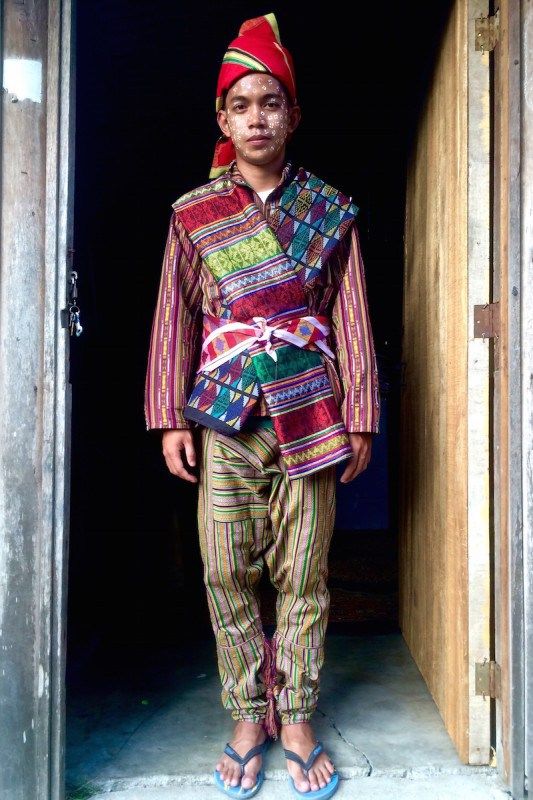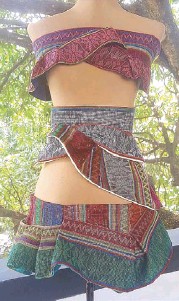Weave is Not Dead! Modernizing the traditional Philippine Weave
- jaime hafner

- Jan 31, 2020
- 3 min read
Updated: Feb 23, 2020
Growing up in America, I was never exposed to the traditions of my Filipino heritage. I took what I could get, always asking for Filipino books and magazines from my relatives overseas. I’ve gone back to visit 3 times over the years, 2 of which when I was too young to really make sense of what I observed. Regardless, I have always been proud of my ethnicity and eager to express my pride with any chance I got (90% of my school projects, show and tell objects, and personal essays had something to do with the Philippines).
During my last visit, I was finally old enough to digest the entirety of what I was experiencing. One of the most prominent and disappointing aspects that I had previously missed was the glorification of western cultures, especially in a physical sense. From what I gathered, big eyes and light skin were romanticized in the media and fashion industries. Billboards were plastered with advertisements of various skin whitening products. It was disheartening to see these lasting effects of U.S administration over the Philippines still so embedded in Filipino standards of beauty, especially when I grew up obsessing over the uniqueness of this culture.
I used to swoon at my grandmother’s traditional dresses, fawning over the vibrant colors and intricate patterns of the Philippine weave. They featured beautiful variations of colors with a dominance of different hues of red. They were usually patterned geometrically or with stripes. The process consists of the threads being measured and cut, then mounted on a wooden board before being dyed and woven on a handloom.
In the pre-colonial era, Philippine arts in general were usually inspired by the native belief systems and the natural world. Philippine weaving dates back to before Spanish occupation. Natives used abaca (aka filipino hemp), cotton, and bark cloth to weave rugs, baskets, textiles, quilts, and clothing. The baskets had a plethora of uses, including storing food, transporting produce, and even catching fish. The textiles functioned as a means of representing power, rank, wealth and virtue for the indigenous peoples. They were also used in many sacred ceremonies. And on top of all that, Philippine weave clothed the vast majority of ethnic tribes.
During Colonization, weave patterns started incorporating decorative flower details. During this time, predominant art inspirations shifted to more Western ideals. However, in the post-independence era, artists looked back to traditional ethnic influences. In recent years, the Philippine weave has been modernized in contemporary filippino fashion. Incorporating traditional aspects in current designs has essentially become a movement taking over the industry. Brands have adapted the traditional dress (which is usually only worn for special events) into more wearable everyday pieces, making it easier to promote the culture in refreshing ways.
Linea Etnika is one of the brands on the forefront of this movement. Started in 2016 by Joy Belmonte and Looie Lobregat, Linea Etnika features collections of casual women’s wear with classic casual silhouettes made unique with indigenous weaves. The goal of these two women was to create a brand that advocated for filipino culture and supported local weavers and dressmakers, creating a source of income for women in impoverished grassroots communities. Even the packaging is handmade by local sewers in Payatas and Quezon City, making it truly a brand for the people, by the people.
In September of 2019, the modernization of traditional weaves was celebrated and showcased the Philippine Fashion Revolution. Over 93 designers featured a plethora of pieces all incorporating Philippine weaves. The clothing ranged from shoes and accessories to office wear, intricate gowns, and casual everyday attire. The 2019 Philippine Fashion Revolution proved that weaves don’t have to be limited to indigenous tribes or special occasions. The show’s finale even showcased wedding gowns designed by the renowned Renee Salud, who featured weaves from Mindanao, Luzon, and Visayas. More than just a fashion show, this event was a celebration of filipino culture and a representation of national pride which, in my opinion, was overdue in a culture that has long suffered occupation by western civilization and its ideals.
Rediscovering and remodeling traditional filipino fashion represents so much more than just a cool retrospective trend. Designers and brands have taken an aspect of indigenous culture and made it more visible to modern filipino society and to the rest of the world. Philippine weaves have been a part of this cultures fashion prior to Spanish Colonization AND Japanese Occupation AND American Administration. The reclaiming of the weave is the reclaiming of filipino nationalism and pride, no longer to be stifled by the glamorization of the western world.
_edited.jpg)

































Comments